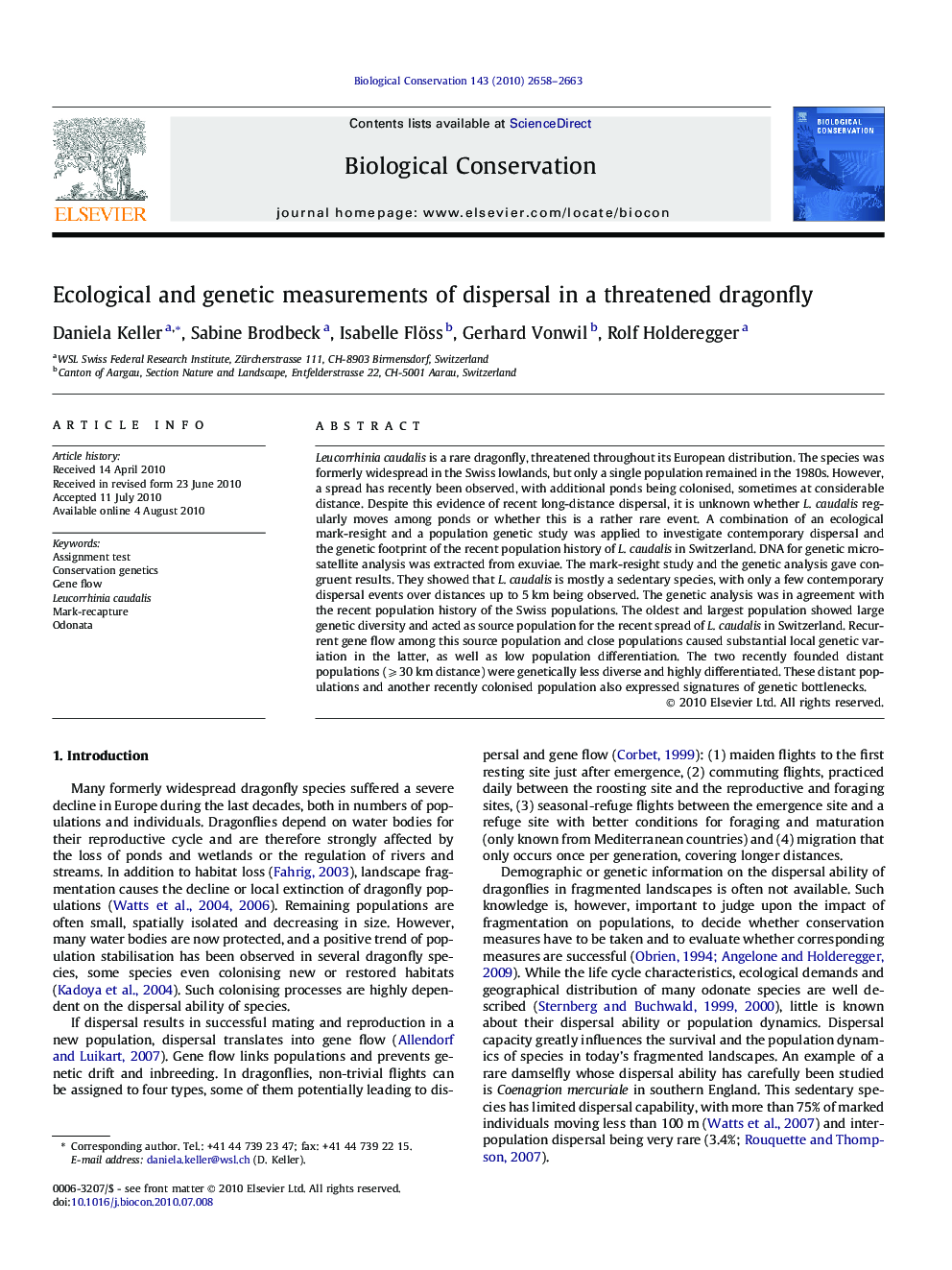| Article ID | Journal | Published Year | Pages | File Type |
|---|---|---|---|---|
| 4385938 | Biological Conservation | 2010 | 6 Pages |
Leucorrhinia caudalis is a rare dragonfly, threatened throughout its European distribution. The species was formerly widespread in the Swiss lowlands, but only a single population remained in the 1980s. However, a spread has recently been observed, with additional ponds being colonised, sometimes at considerable distance. Despite this evidence of recent long-distance dispersal, it is unknown whether L. caudalis regularly moves among ponds or whether this is a rather rare event. A combination of an ecological mark-resight and a population genetic study was applied to investigate contemporary dispersal and the genetic footprint of the recent population history of L. caudalis in Switzerland. DNA for genetic microsatellite analysis was extracted from exuviae. The mark-resight study and the genetic analysis gave congruent results. They showed that L. caudalis is mostly a sedentary species, with only a few contemporary dispersal events over distances up to 5 km being observed. The genetic analysis was in agreement with the recent population history of the Swiss populations. The oldest and largest population showed large genetic diversity and acted as source population for the recent spread of L. caudalis in Switzerland. Recurrent gene flow among this source population and close populations caused substantial local genetic variation in the latter, as well as low population differentiation. The two recently founded distant populations (⩾30 km distance) were genetically less diverse and highly differentiated. These distant populations and another recently colonised population also expressed signatures of genetic bottlenecks.
